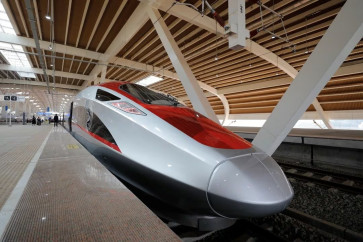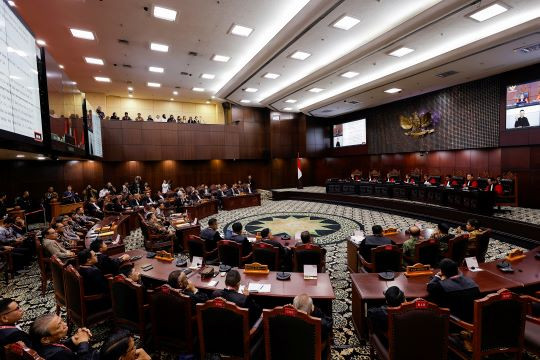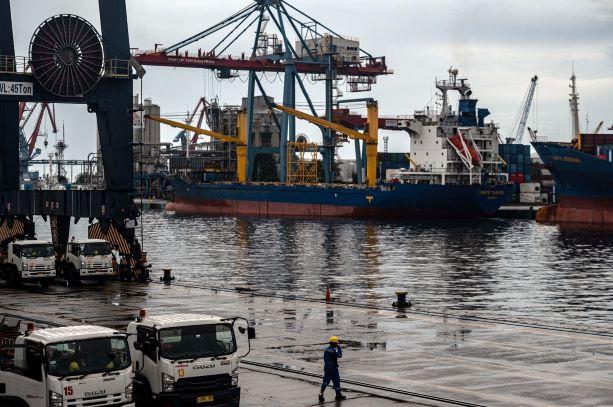Coal: Global demand weakens
While coal prices were stickier on the way down compared to other commodities like oil, the Newcastle price now suggests coal prices have begun to play catch-up, following trends in oil prices down by 14 percent week-on-week and 21 percent since the start of the year to US$65
Change Size

W
hile coal prices were stickier on the way down compared to other commodities like oil, the Newcastle price now suggests coal prices have begun to play catch-up, following trends in oil prices down by 14 percent week-on-week and 21 percent since the start of the year to US$65.32 per ton.
These time-lagged price movements should only be temporary and are caused mostly by the carried over impact of completed contracts.
The recent plunge in coal prices have been caused by the build-up of Australian metallurgical coal supplies, entering the global thermal coal market, hence intensifying competition further.
This will place Australia as Japan's top supplier of choice not only due to delivery reliability but also due to Japan's preference for high calorific value (CV) coal.
It is worth highlighting that Japan, accounting for around 23 percent of Indonesia's total coal exports, is our largest coal importer.
According to ABARE (the Australian Bureau of Agricultural and Resource Economics), Japan as the world's largest coal importer is forecast to have thermal coal imports fall by at least 3 percent to 130 million tons in 2009 as the capacity utilization of several nuclear power plants recovers following breakdowns or maintenance in 2008.
The nuclear power plant utilization rates of Japan's 10 nuclear power companies rose to a five-month high of 67.2 percent in January 2009 to help meet peak winter demand, according to Japan's Ministry of Economy, Trade & Industry (METI).
Higher usage of energy produced by nuclear power plants will cause less energy usage from other sources, including the coal-fired power plants.
This plays a crucial role in reducing global coal demand significantly this year.
The coal price index should be pressured downward further within the near future, especially after the outcome of current on-going negotiations between Japan and Australia on coal- contract renewals.
From another point of view, the Chinese government has experienced rising coal stockpiles and has decided to issue a bigger than expected second batch of coal export quotas in 2008 ranging up to 15.9 million tons compared to the 0-10 million tons bracket adopted before.
Going forward, with China having closed down some 100,000 factories last year due to the economic slowdown, we expect China's coal exports to rise in 2009.
It is worth highlighting that China is the world's biggest coal producer with total 2008 production at 2.5 billion tons (45 percent of total global production).
This is expected to rise to 2.7 billion tons in 2009.
Thus, the impact of China's slowing domestic consumption this year will undoubtedly add pressure upon an already crowded global coal supply position, particularly as major exporters are still targeting production growth of 3-7 percent per year.
Meanwhile, Indonesia, the world's largest thermal coal exporter, is still targeting optimistic 2009 coal sales of 280m tons, a significant expectation of 12 percent year-on-year growth compared to 2008.
On the flip side, South Korean power companies such as Korean Midland Power Co (KOMIPO) and Korean East West Power Co (KEWESPO) are at present being offered higher coal volumes than what they seek in tenders with many offering sales prices at $3-$4 per ton lower than current market prices.
KOMIPO stated that it saw bidders from as far afield as South African and Canada, implying that producers will have to work harder to sell coal as demand weakens while supply steadily increases.
In 2009 coal producers should mitigate higher risk exposure to the volatile overseas coal market by securing more of their sales volumes in long-term contracts rather than spot sales.
Unlike in 2008, when spot sales provided producers with higher sales prices, 2009 demand is relatively weaker resulting in much lower prices.
Since its recent peak, coal prices have come down 66 percent to about $65 per ton at present.
We expect prices to decline further to as low as $53 per ton in 2009. Thus, domestic-sales oriented coal producers can anticipate less market pressure and lower risk exposure in 2009, based on adequate global supply and weakening demand.
The writer is an analyst at Bahana Securities









